Pompeii
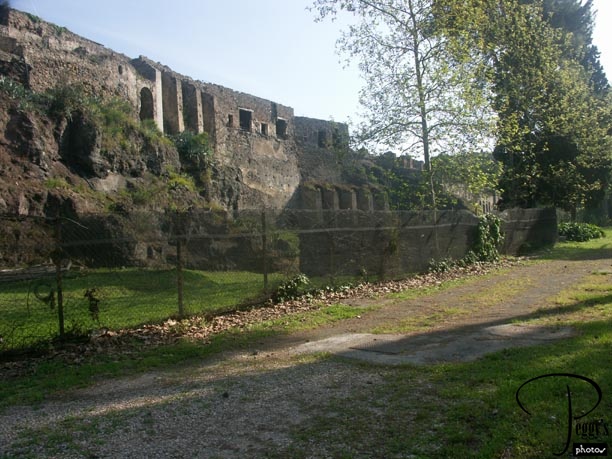
Today, we drove from Sorrento to Pompeii. As you know, Pompeii was a Roman city that was buried in ash when Mt. Vesuvius erupted in 79 A.D. Much of it has been excavated. We had a local guide give us a good tour of Pompeii, but there is so much to see here that you could use a day or more to see it thoroughly. This photo is of Pompeii on the hill above the entrance.

Pompeii
Pompeii
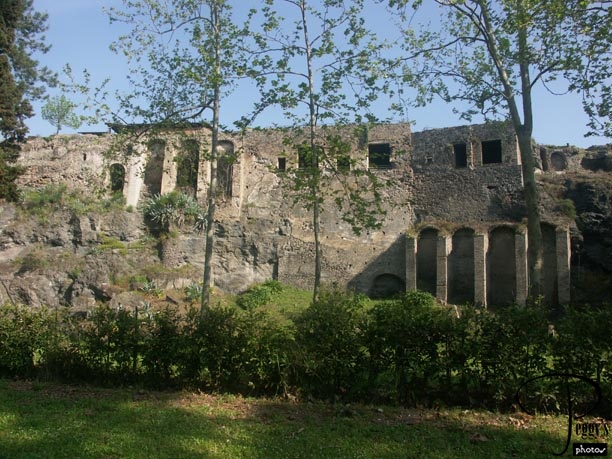
Another view taken from the entrance. I have put photos of Pompeii on a slide show on this site: Go to Slide Shows, Western Europe, Italy–1, “Pompeii.” The photos don’t really scratch the surface of what there is to see in Pompeii, but it will give you a good idea of what has been excavated. Note that most of the artifacts that were uncovered in Pompeii are now in the Naples Archaeological Museum.

Pompeii
Pompeii
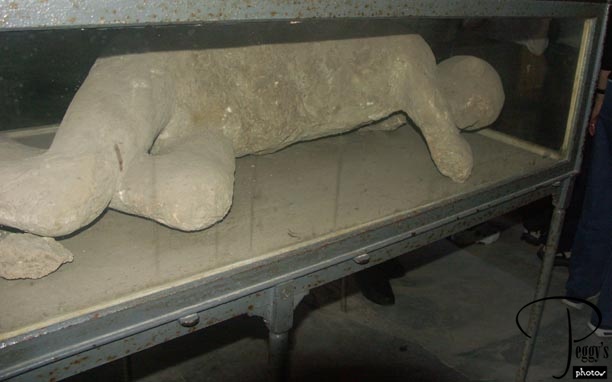
Liquid plaster was poured into the spaces left in the layer of ash by bodies of humans and animals. In this way, plaster casts were made of the bodies. This photo shows one of the plaster casts.

Pompeii
Pompeii
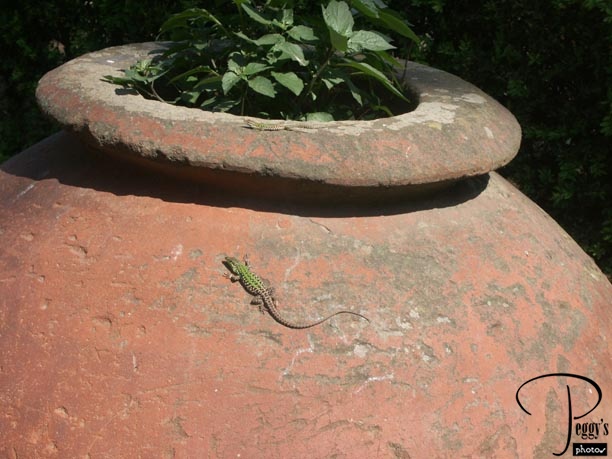
Two lizards on a clay pot near the entrance to Pompeii (I saw one of our tour group members taking photos of these lizards and I followed her lead––it came out to be a very nice photo––thanks Karen).

Pompeii
Pompeii
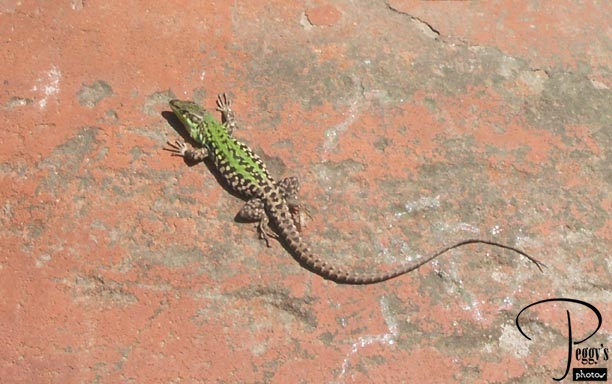
Close–up of one of the lizards.

Pompeii
Pompeii
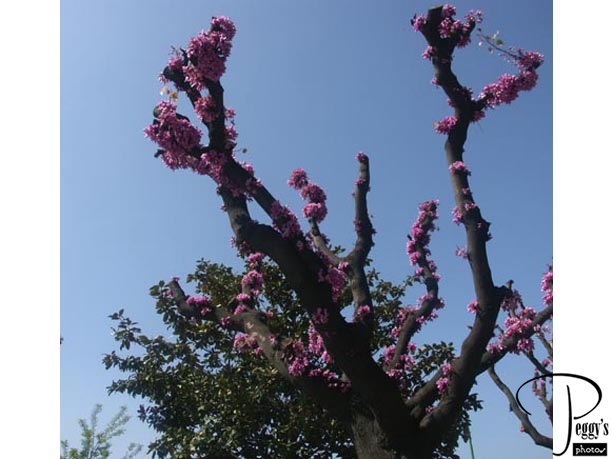
Very pretty unusual tree in bloom (I have never seen one like this before) outside the entrance to Pompeii.

Pompeii
Campania
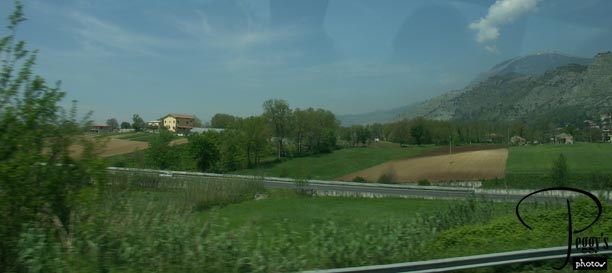
We drove north through the region of Campania to visit the Commonwealth War Cemetery. I took this photo from the bus, showing some of the countryside.

Campania
Abbey of Monte Cassino
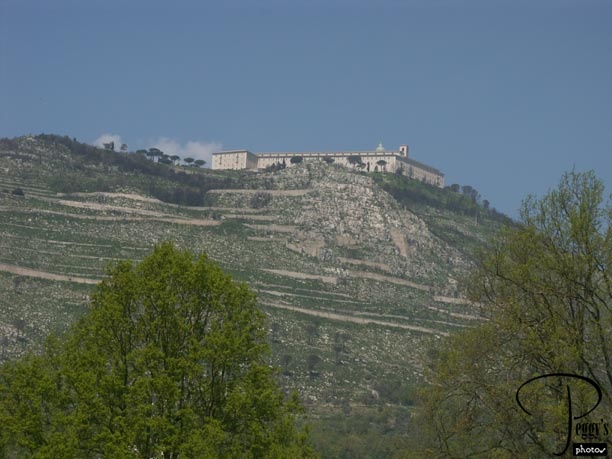
This Benedictine abbey is on top of the hill in Monte Cassino (we are now between Naples and Rome and slightly inland). It is the principal monastery of the Benedictine Order, an order founded in 530 A.D. by St. Benedict. The abbey was destroyed by Lombards about 585, by the Saracens in 884, by the Normans in 1046, by an earthquake in 1349, and by an Allied bombarment in 1944 (it served as a garrison for the Nazis, hence the bombing). After the war, it was restored by the Italian government and was reconsecrated in 1964.

Abbey of Monte Cassino
Abbey of Monte Cassino
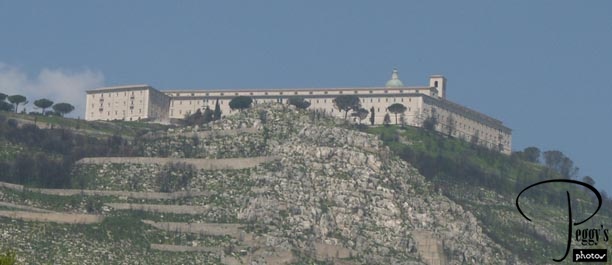
Close–up of the abbey. Paolo told us that you need to contact the abbey before you are allowed to visit it. We didn’t go there but there are some good websites showing photos of the abbey.

Abbey of Monte Cassino
Commonwealth War Cemetery
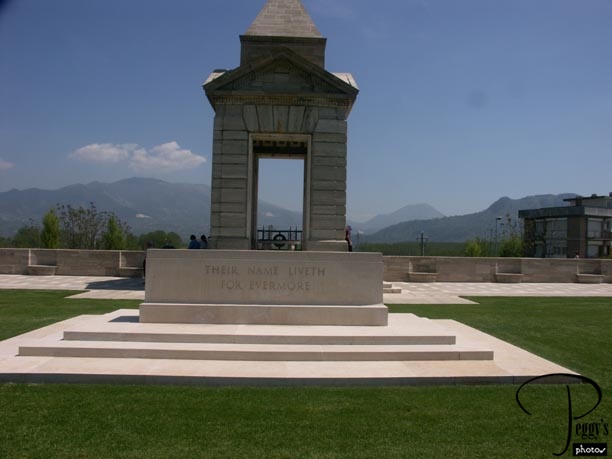
The Battle of Monte Cassino (a series of four battles) was fought from January 12 to June 5, 1944. It was actually the Battle for Rome, the battle actually being fought in Monte Cassino, not in Rome. The cemetery here is for the Commonwealth soldiers who died in this battle. This photo shows part of the memorial. On it reads this inscription: “Their Name Liveth Evermore.”

Commonwealth War Cemetery
Commonwealth War Cemetery

Commemorative on the memorial in the above photo. The inscription on it reads: “The land on which this cemetery stands is the gift of the Italian people for the perpetual resting place of the sailors, soldiers, and airmen who are honoured here.”

Commonwealth War Cemetery
Commonwealth War Cemetery
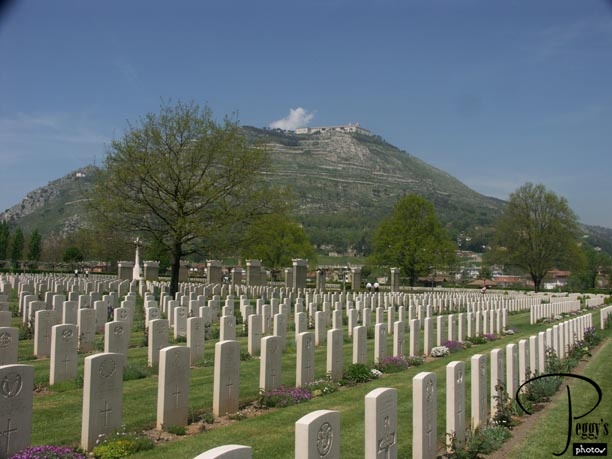
View of the cemetery. The abbey is on the hill above the cemetery.

Commonwealth War Cemetery
Commonwealth War Cemetery
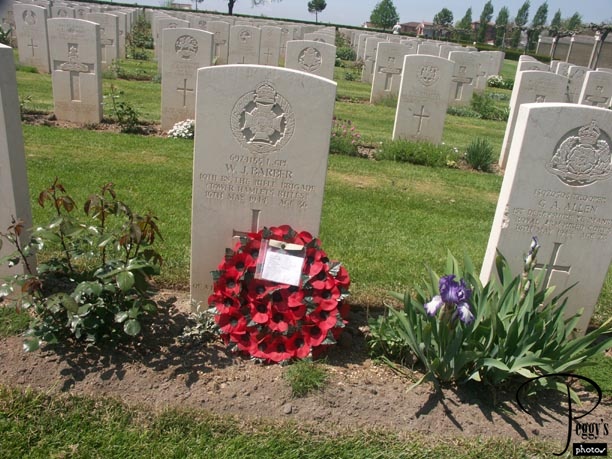
Each regiment who fought in the Battle of Monte Cassino has a different design on its headstones.

Commonwealth War Cemetery
Commonwealth War Cemetery
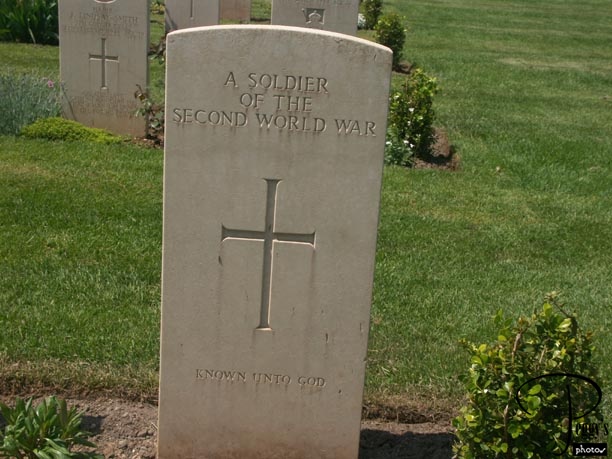
Headstone of an unknown soldier.

Commonwealth War Cemetery
Commonwealth War Cemetery
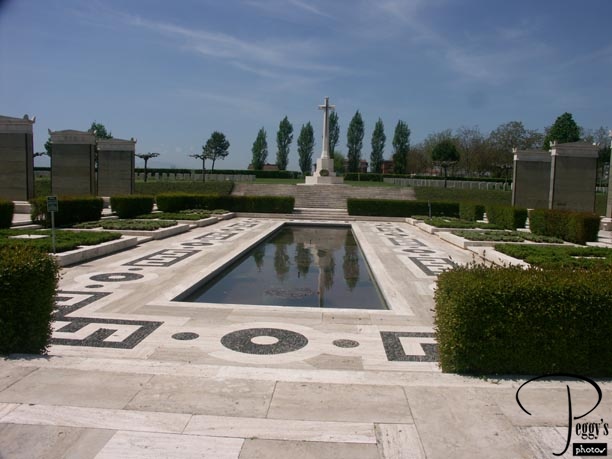
Part of the memorial.

Commonwealth War Cemetery
Assisi
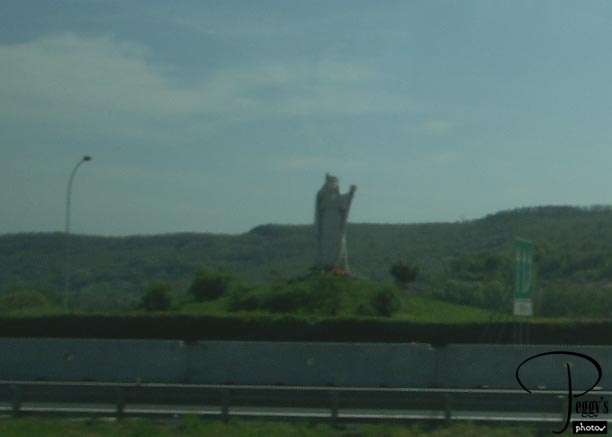
From Monte Cassino, we drove north, bypassed Rome, then East to the middle of Italy to the Umbria region. This statue of the Virgin Mary is on the highway at the entrance to the city of Assisi. She has her arms spread to welcome all who visit here. (This photo is really bad but it tells a story so I put it on. I will have to get in the habit of buying some postcards to scan when I don’t get a good photo.)

Assisi
Assisi
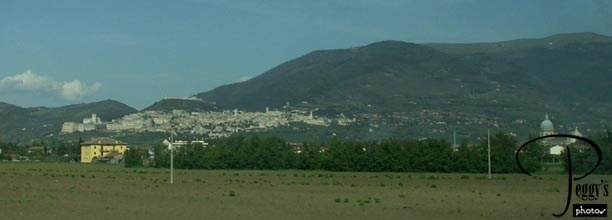
View of Assisi. The Basilica of St. Francis is on the left at the bottom of the hill town. The green dome belongs to the Basilica di Santa Maria degli Angeli.

Assisi
Assisi
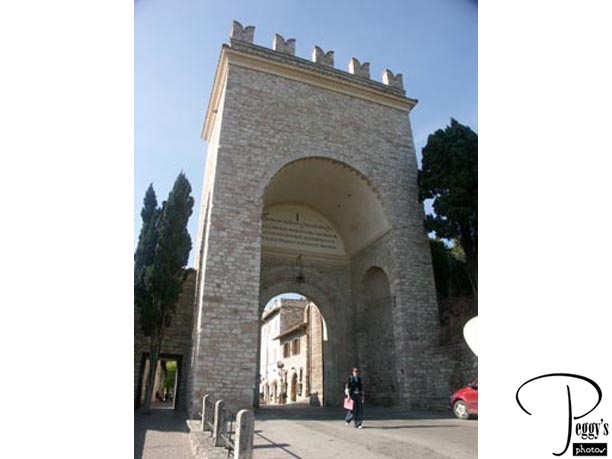
The historic part of Assisi was built on a steep hill. We entered the town on the top of the hill through this gate, escorted by our local guide named Marco. We were told that he is also a Shakespearean actor and he gave much pizzazz to his presentation.

Assisi
Assisi
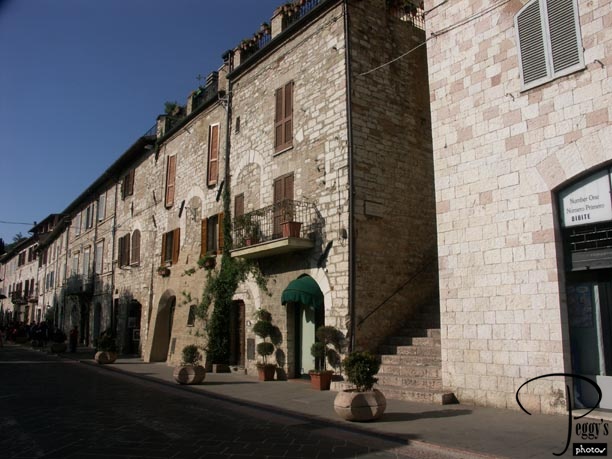
Assisi is a wonderful medieval town of beautiful old buildings, steep streets, and churches. It is the birthplace of St. Francis of Assisi and this is where he founded the Franciscan Order. There is a very close connection between Assisi and California: San Francisco is named after St. Francis, Santa Clara is name after St. Clare who also is from Assisi, and the city of Los Angeles derives its name from the chapel in Assisi where St. Francis started his religious order. In 1769, the Portola expedition camped on a stream that they named Nuestra Senora de los Angeles de Porciuncula (Our Lady of the Angels of Porciuncula) referring to this chapel. Additionally, Father Junipero Serra, who built the California missions, was a Franciscan.

Assisi
Assisi
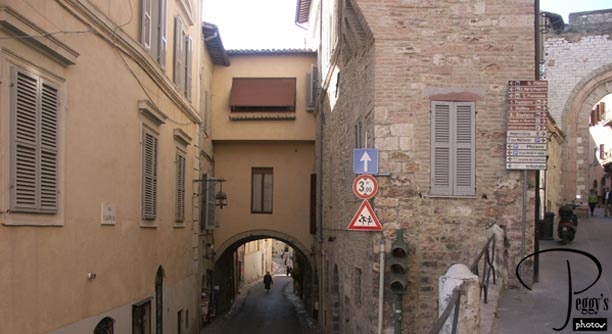
A street in Assisi.

Assisi
Assisi

Another street in Assisi.

Assisi
Assisi
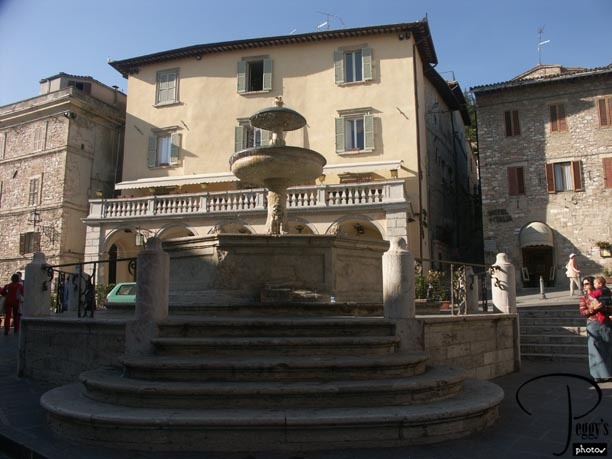
Fountain in middle of a piazza in Assisi.

Assisi
Assisi
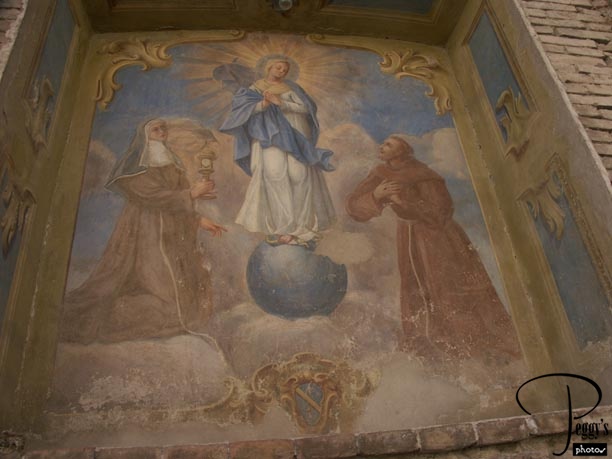
Fresco on the side of a building.

Assisi
Assisi
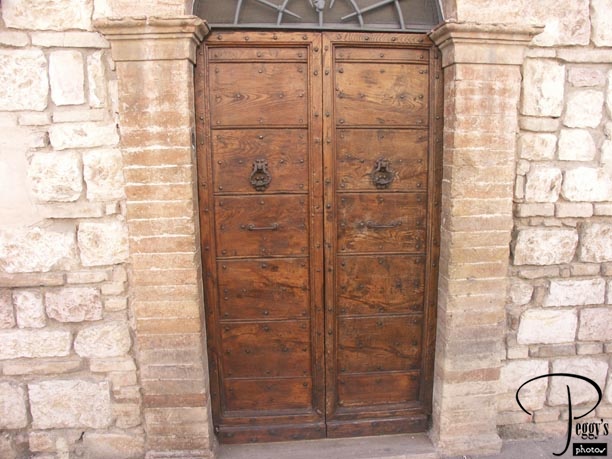
One of the many old doors that you see.

Assisi
Assisi
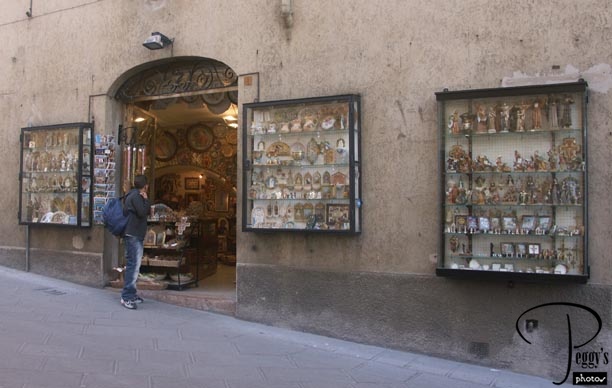
One of the interesting stores we saw on our walk on the streets of Assisi. One of the main Italian pottery factory towns, Perugia, is located near Assisi and beautiful pottery was being sold here. We weren’t given enough time to go back to these shops.

Assisi
Assisi
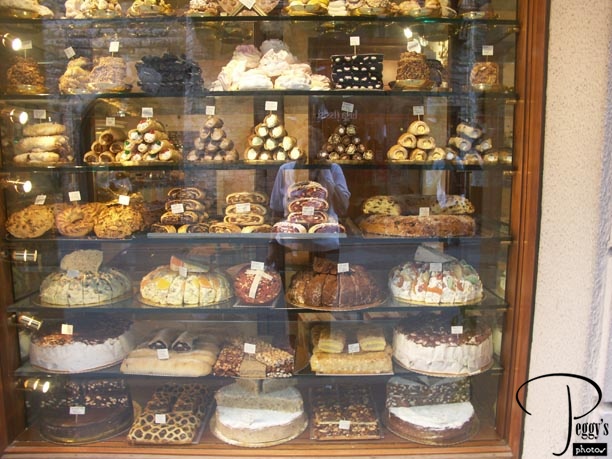
We also passed many pastry stores that had at least my mouth watering, but we weren’t given enough time to indulge.

Assisi
Assisi
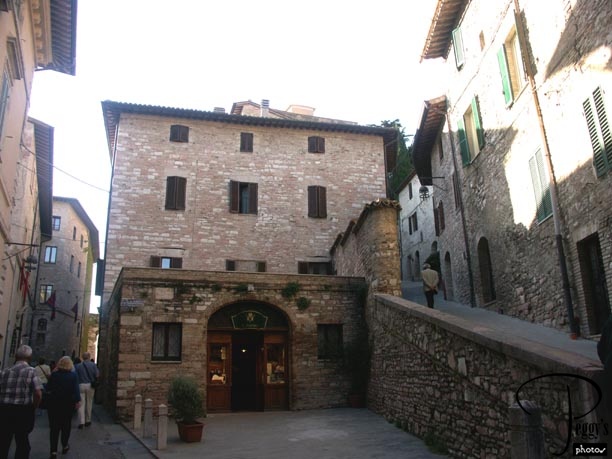
Another street scene in Assisi.

Assisi
Assisi
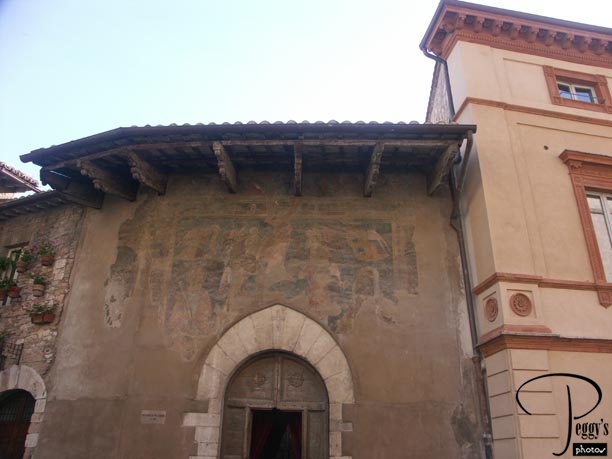
Old frescoes on a building.

Assisi
Assisi
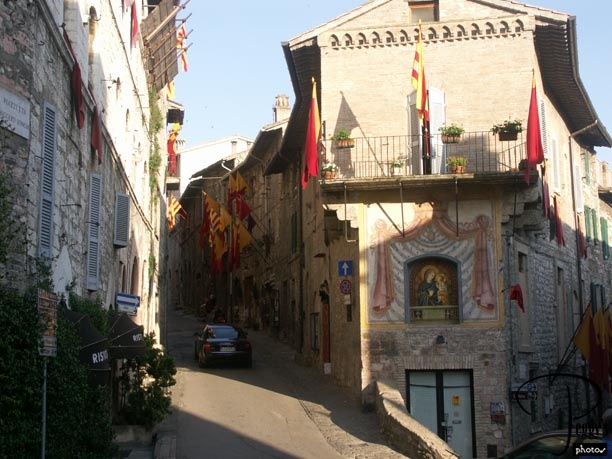
Another street scene in Assisi.

Assisi
Assisi
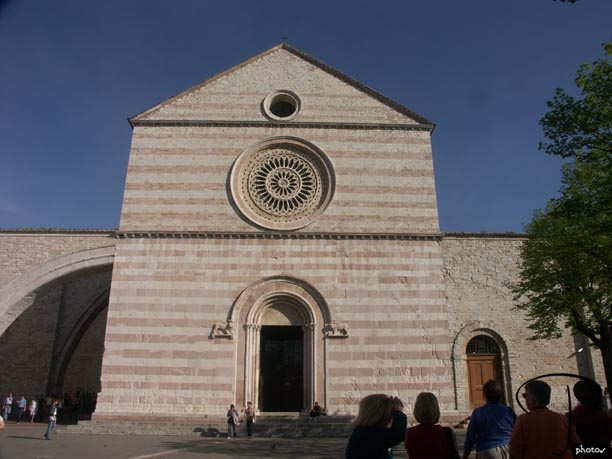
Basilica of St. Clare. This was built in 1265 and is dedicated to the founder of the Order of Poor Ladies (Poor Clare). She helped St. Francis in Assisi and she is buried in this church. No photos were allowed inside the church. Frescoes were originally painted on the walls but they were painted over during the time of plague as it was believed that this would stop the spread of the disease. Right now, there is not enough money to restore them.

Assisi
Assisi
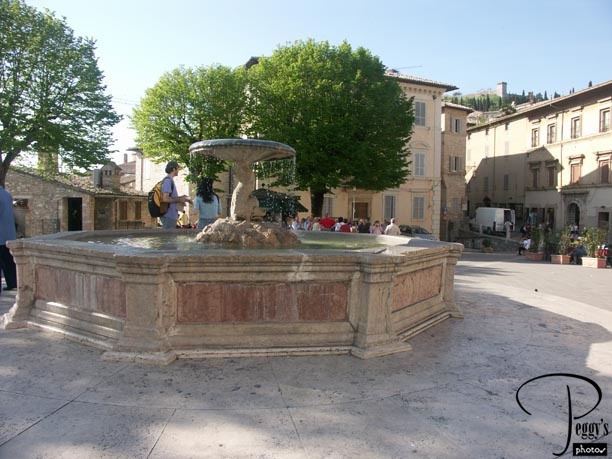
Fountain and piazza in front of the Basilica of St. Clare.

Assisi
Assisi

View of the valley from the hill.

Assisi
Assisi
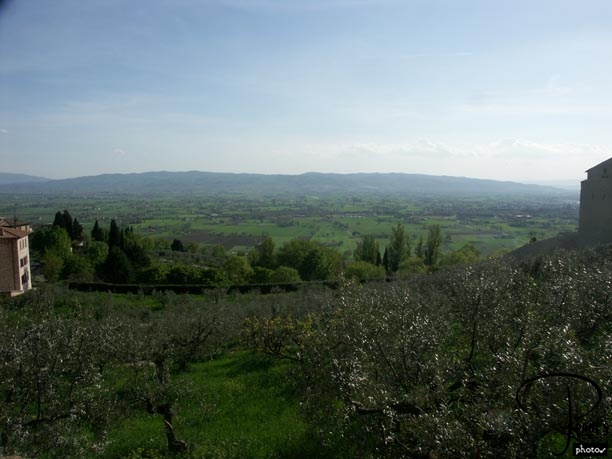
Another view of the valley from the hill. Another Californian connection: The valley looks very much like the San Fernando Valley.

Assisi
Assisi
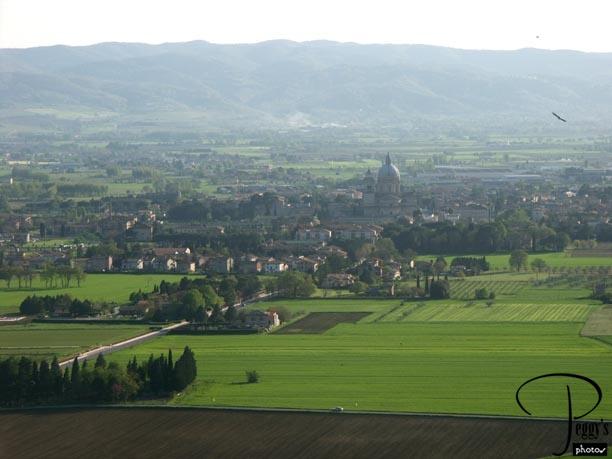
Another view of the valley, this time showing the Basilica di Santa Maria degli Angeli.

Assisi
Assisi
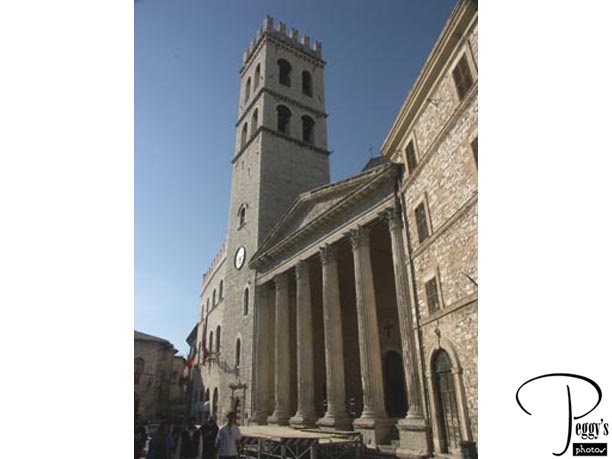
Church of Santa Maria sopra Minerva. The columns in front of the church are Roman; this was originally the Temple of Minerva. The church of Santa Maria sopra Minerva dates back to the 9th century, and its bell tower, back to the 13th century.

Assisi
Assisi

The interior of the Church of Santa Maria sopra Minerva is 17th–century Baroque.

Assisi
Assisi
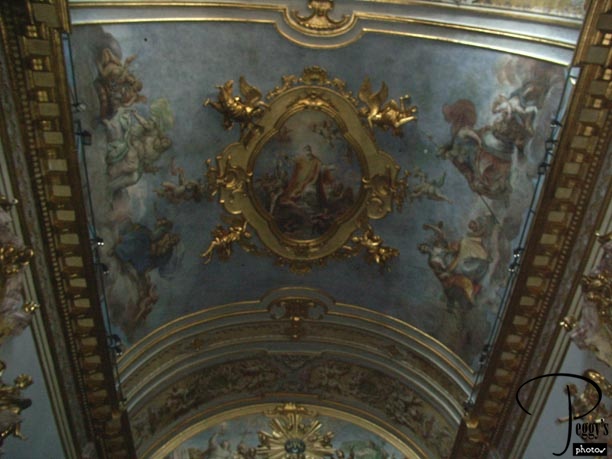
Ceiling of the Church of Santa Maria sopra Minerva.

Assisi
Assisi
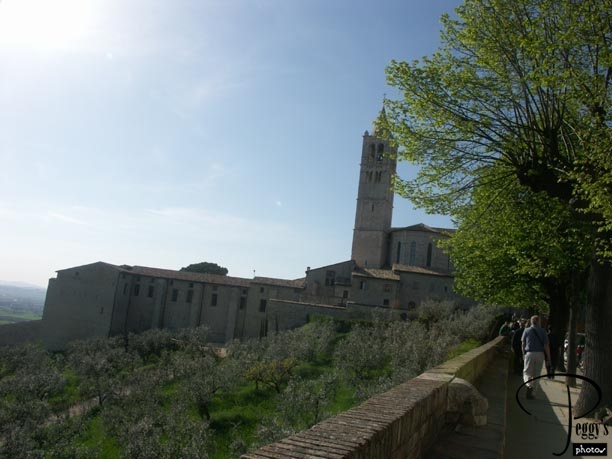
We walked farther down the hill to the Basilica of St. Francis seen in this photo.

Assisi
Assisi
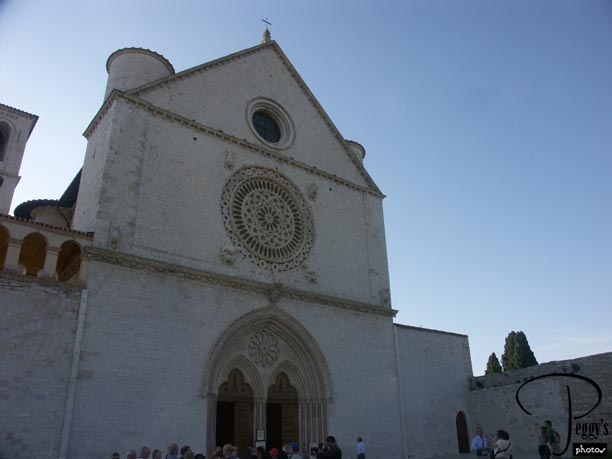
There is both an upper basilica and a lower basilica. This photo shows the upper basilica. This is one of greatest of Christian shrines, with many pilgrims coming here, and also is one of artistic highlights of Europe. It was built in 1228, two years after the death of St. Francis. Both basilicas are decorated with frescoes by Giotto (called the Father of Italian Painting), among others. No photos were allowed inside either the upper or lower basilicas.

Assisi
Assisi
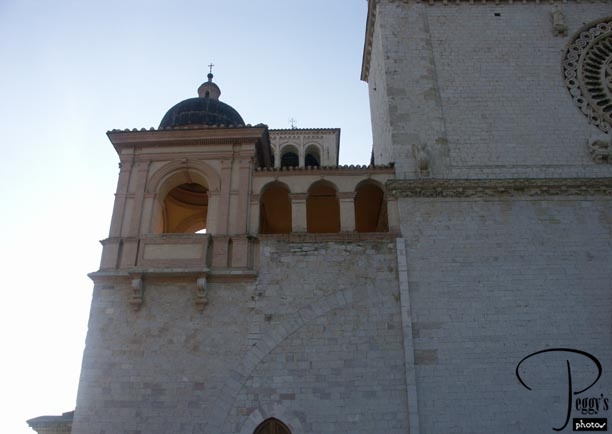
The campanile (bell tower) of the Basilica of St. Francis.

Assisi
Assisi
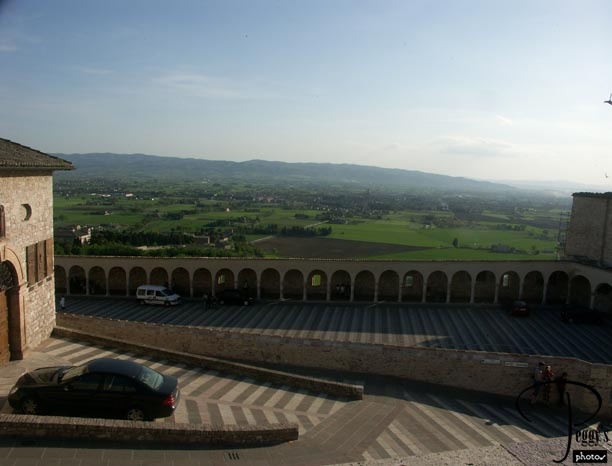
View of the square on the lower level. During medieval times, pilgrims camped in the arcades.

Assisi
Assisi
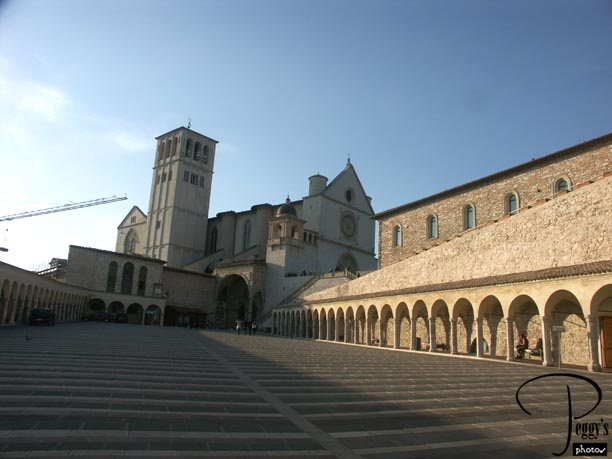
View of the upper and lower basilicas and the square.

Assisi
Assisi
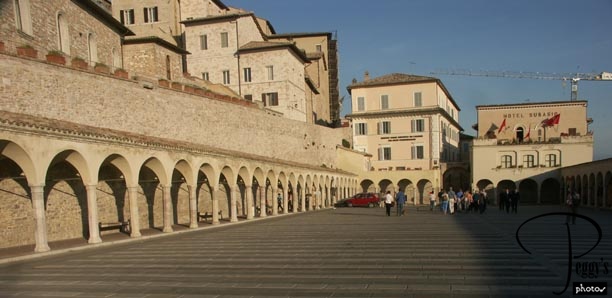
The other side of the square.

Assisi
Assisi
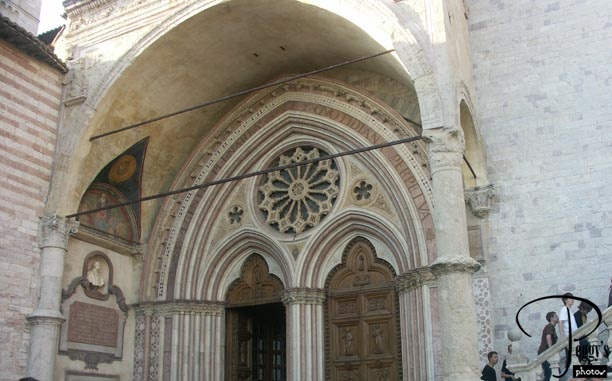
Entrance to the lower basilica.

Assisi
Assisi
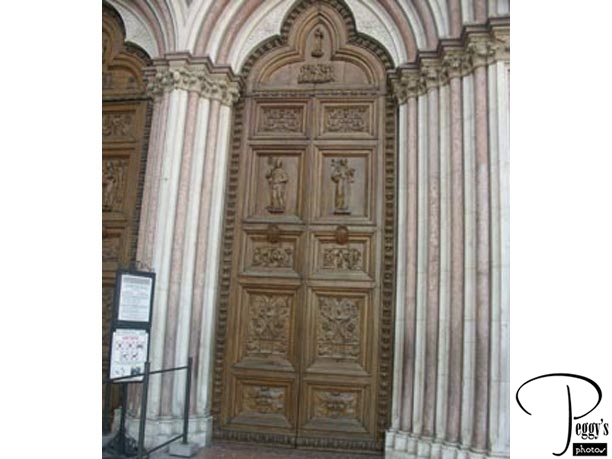
One of the doors to the lower basilica.

Assisi
Assisi
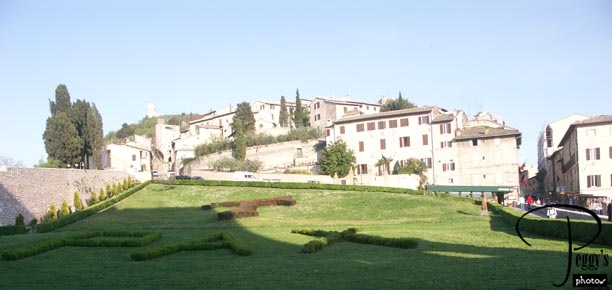
Park across from the upper basilica. St. Francis was fighting temptation when he threw himself on a bed of roses. The thorns of the roses immediately dropped off and since then thornless roses have grown here. The site where St. Francis threw himself on the roses is not here but at the Basilica di Santa Maria degli Angeli.

Assisi
Assisi
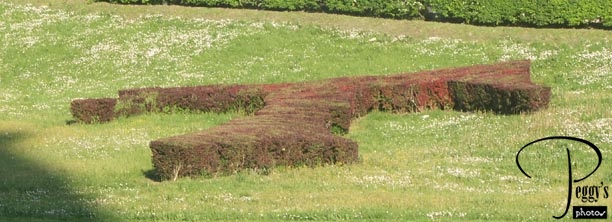
Close–up of the rose bushes in this park, which are in the shape of a Tau Cross, which was the symbol of St. Francis, which he took from the Greek letter T. The shape of this cross represented to St. Francis lifelong fidelity to the Passion of Christ.

Assisi
Assisi
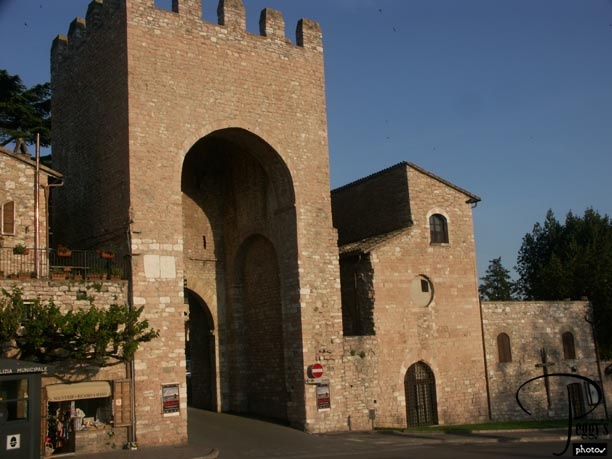
We walked out of the old town here through this gate. I wish that we could have stayed longer here as I would have liked to explore the town more, eat some Assisi pastries, and visit a pottery factory as well as stay longer in the churches, which means that someday I will have to go back here. Assisi is the Umbria region, but tours to Tuscany usually also visit Assisi as it is not a great distance from Florence.

Assisi
Assisi

Sunset over Assisi. We spent the night at Assisi and would visit the Basilica di Santa Maria degli Angeli tomorrow.

Assisi
Assisi
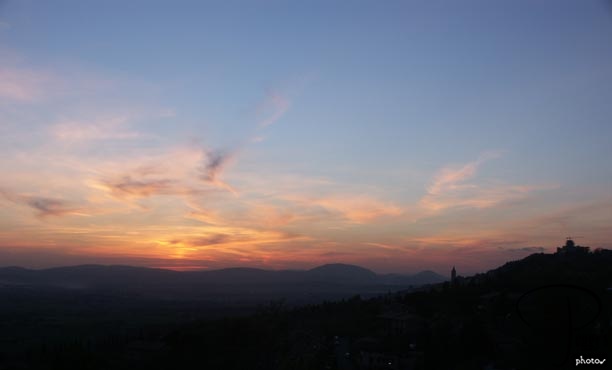
More of the sunset over Assisi.
